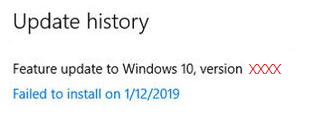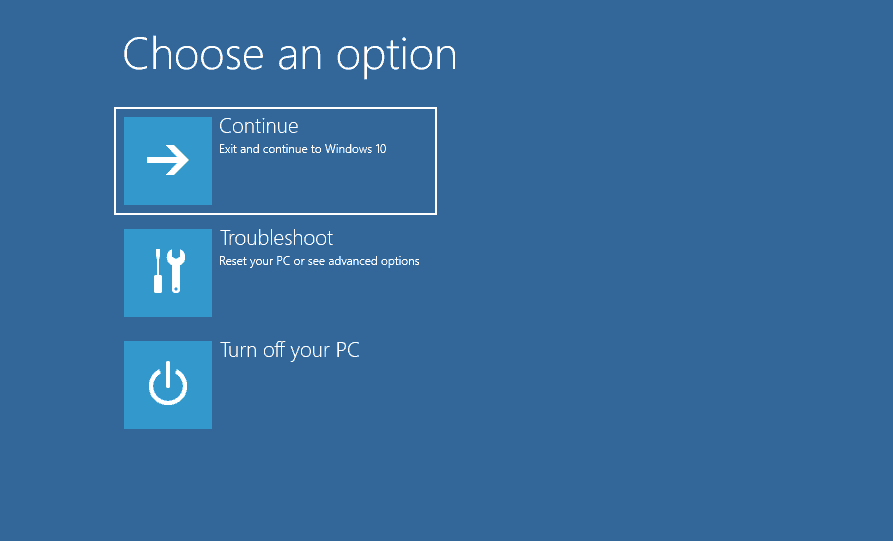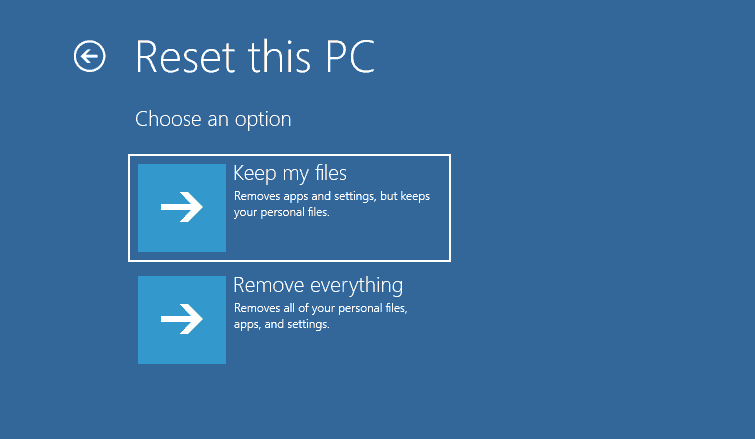
The Black Screen
It’s not the “Blue Screen of Death” or one of the many scenarios already addressed such as out of date display drivers. Your Windows PC boots normally, the login screen looks fine but you put your login and password in and … nothing. Blank screen. Sometimes you have a mouse pointer and you can right click and get the context menu, but nothing works.
Control+Alt+Delete lets you sign out or try and start the Task Manager – but it doesn’t launch. None of the tips on the web have helped and you’re stumped.
We’ve had this happen three times towards the end of 2020 and each time it was the same cause – a failed Windows Feature Update. Two cases cased by the 20H2 feature update and one caused by a 1909 feature update.
Troubleshooting the Blank Screen after Login
In all cases the PC appears to boot normally until you enter your username and password. Then, instead of your desktop, you get a blank screen.
Booting in Safe Mode also fails if you login using the same username and password.
If there is another user profile on the PC, and logging in to that profile works normally, then you would appear to have this issue. The Windows Feature update has failed and corrupted the user profile that was logged in when the update attempted to run.
To prove it, using the working profile (or after creating a new profile) check Windows Update and look for a failed update. It will look something like the image below where the “XXXX” will be a Windows Feature Update version like 1809, 1909 or 20H2

The Good News
You should not have lost any data. All of your files in your %USERPROFILE% folder will still be there – you just can’t (easily) get to them.
The Bad News
Your profile is cactus. We have not, so far, been successful in restoring access to the corrupt profile.
Your Windows system could also be unstable depending on how far the update had progressed before it failed.
Recovering Your Data
Both of these options required you to have admin access. If you haven’t sent up a login as an administrator then you might want to call an IT Support person and get them to back up your data – if possible – because your only option without admin access is to wipe and start again.
Assuming you do have an account with admin privileges, you have two options:
Option 1: Refresh My PC
Windows 10 has an option to refresh or reset the PC. Refresh attempts to preserve your user data but effectively re-installs Windows – so you will have to re-install any applications. Reset does a full wipe. Don’t choose that unless you don’t want to save any data.
This option should also clean up any Windows System corruption so it should be the first thing to try.
- Boot the computer normally but instead of logging in, hold down the Shift key and click the power button button at the bottom-right of the screen and choose “restart”. Hold the Shift key down while the computer restarts and you should find yourself at the recovery screen.

- Click on “Troubleshoot”
- Click on “Reset this PC”

- Click on “Keep my files” to attempt to restore Windows without losing you documents, photos, music, etc.
- Windows will reboot and begin the restore process.
Here’s why I don’t think this will always work. If the corruption is in your profile, and this method saves all your files, there is a chance it will also save whatever corruption is causing your profile to bomb when it loads.
It was listed as a working fix for a handful of people that reported the problem (according to the many Google searches I did while trying to find a solution to this problem) but in many other cases, it has not worked.
Which leads me on to the only solution that worked for the three cases I encountered:
Option 2: Create a New User Profile
If you have already created a new user profile to test whether or not you can sign in normally, then you are already halfway there – assuming there is no Windows System corruption – but we’ll cover that below too.
However, if you only have one user profile on your PC, and that is the corrupt profile, it becomes a little more tricky. At this point you might want to contact your local IT guru and get them to sort it for you.
If you can’t boot your PC normally to create a new profile, you’ll have to boot into Safe Mode and, if you are lucky, when you sign in you’ll get a basic desktop and from here you can create a new user profile.
Let’s assume that you have a second user profile and you can log in to that one.
From the new profile:
- Open up the File Explorer and find your user data – it’s normally in C:\Users
- You should be able to see all users that have signed into the PC. Identify which is the old “corrupt” user and which is your current user.
- Open the folder of the corrupt user – you will need administrator access to do this and if the files were encrypted then this won’t work.
- Hold down the Control key and select the following folders:
- Contacts
- Documents
- Downloads
- Favourites
- Links
- Music
- Pictures
- Saved Games
- Searches
- Videos
- Copy all of those files (Control+C) and go back to the C:\Users folder
- Open the new profile and paste all of those folders – overwriting all of the existing files.
After the copy process is complete you will have most of your data back and you should now be able to start using the new profile.
You will have to re-install any applications and setup email.
Once everything is working you should delete the old user profile.


